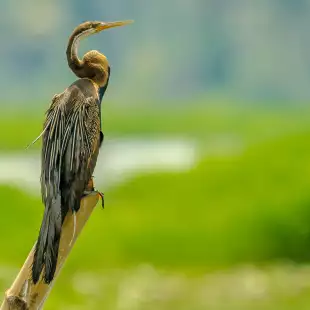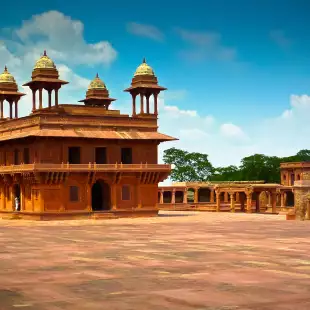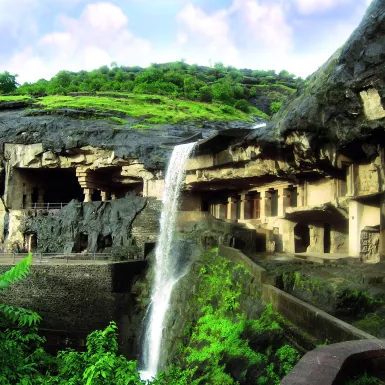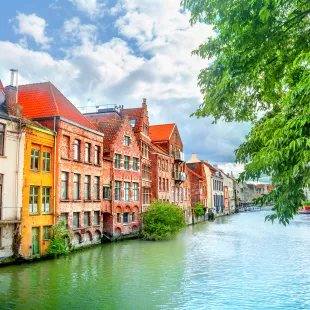With a diverse range of culture, heritage and spirituality across its vibrant lands, India is enchanting to new and returning travellers.
From the busy market bazaars, and the preserved ancient city of Fatehpur Sikri to Pushkar’s historic bathing ghats, unimaginable sights are everywhere you go. Pick our tours to India to see some of the world’s most colourful locations, like the Pink City of Jaipur. We witness the early morning mist dissipate as the sun begins to shine over the iconic Taj Mahal – the mirage above the landscape is fascinating. In Old Delhi’s Chandni Chowk market, dive into some authentic Indian dishes that are distinct from what you’re used to and enjoy a free day exploring the tranquil surroundings of Khimsar, home to the blackbuck and bluebuck antelope. Speaking of wildlife, we’ll head to Ranthambore National Park to spot some of their elusive tigers on an epic rail journey across the country.
Expert Tour Managers and local guides will be with you on every tour, showing you the well-known landmarks of India’s Golden Triangle and showcasing the realities of life as a local. History and cultural influences follow you wherever you are. Take Mumbai – the birthplace of Bollywood Day – a snapshot of the rich architecture of the Indo-Saracenic and the Gateway of India (built by Scottish Architect George Witter). And we can’t forget to mention the exotic few days in Goa on our beach stay holidays. These are once-in-a-lifetime trips - which itinerary will you choose?
Want to ensure you get under the skin of this fascinating destination? Check out our Signature options.
Escorted Tours
Holiday search form
We've found you 6 Escorted Tours in India
Selecting filter and sort by options will automatically reload the results displayed below.
Filters
Popular FAQs
The currency in India is the Indian rupee (INR). However, if you’re looking to exchange pound to rupees, you’ll find it almost impossible. The Indian Rupee is a closed currency that is heavily regulated, this means there are restrictions on taking the currency in and out of India. It's not permitted for tourists to take Indian rupees in or out of the country, so you’ll have to wait until you’re there. You can change money at the airport, in banks and large hotels. ATMs are available too, especially in more established resorts. While Visa and Mastercard are widely accepted, we recommend you check with your card provider about what fees they charge for transactions abroad.
Travellers in India, should consider staying in one of the cities that make up India’s Golden Triangle
Delhi
Built upon the many incarnations of Delhi from the past, India’s capital city is perfectly balanced between two entirely different eras of history containing equal parts historical marvels and modern landmarks. Delhi plays host to three separate UNESCO World Heritage sites, the Qutb Complex, Red Fort and Humayun’s Tomb, and has even more fascinating, ornate temple complexes to discover, such as the Swaminarayan Akshardham which is a modern structure dedicated to the millennia of Hindu and Indian culture. Delving into Old Delhi itself is a brilliant, bustling bit of chaos, where you’ll share the streets with what feels like the entire city at once – a truly unforgettable spectacle.
Jaipur
Rajasthan’s state capital is known as the Pink City due to the rosy hue that many of Jaipur’s buildings have, creating gorgeous strokes of vibrant colour across the cityscape. The Hawa Mahal, Amber Fort and other historical structures offer respite from the endless throng of people flowing from place to place in the heart of the city, along with exemplary instances of Rajput and Mughal architecture. At the centre of Jaipur lies the City Palace, an opulent palace complex that originally housed Maharaja Sawai Jai Singh II which still houses the seat of the current Maharaja of Jaipur.
Agra
Although many know Agra for the wondrous Taj Mahal, getting up close for an intimate look at the city reveals its history within the great Mughal empire, commemorated in great artistic works and delicious dishes. Outside of the world wonder, the ancient ex-capital of the Mughal empire – the Fatehpur Sikri – is a delight to explore, and the colossal walls of the Agra Fort are another two highlights that shouldn’t be missed in order to secure a rounded tour of this historic city.
Taj Mahal
Few sights are as instantly recognisable as the Taj Mahal, renowned for its position among the Seven Wonders of the World– and with good reason. This immensely beautiful mausoleum commemorates the lives of Emperor Shah Jahn and his wife, Mumtaz Mahal, at the centre of a sprawling 42-acre complex complete with a verdant formal garden. Its design is the pinnacle of Mughal architecture and is considered to be a true masterpiece, while at its core it served as a heartfelt final farewell from the emperor to his partner.
Wildlife safari in Ranthambore
Just outside Ranthambore is an area which is now a vast wildlife reserve where you can find all manner of rare species. You can take a safari within an open-topped ‘canter’ in order to spy one of the most regal animals out there – the Bengal tiger. Seeing these majestic creatures flourish in a natural habitat is a wonderful thing to behold, and many other animals can be spotted as you make your way around the park, such as sambar, deer, sloth bears and playful langur monkeys.
Houseboat cruise on the Kerala Backwaters
Despite the name, the Kerala backwaters are a calm and quaint stretch of lakes, lagoons and rivers running from Kochi down to Kollam. Taking a cruise gives you a chance to see some spectacular views of the palm-lined, sun-soaked shores as well as the day-to-day lives of the Indian people who live by the backwaters. Arguably, the most authentic way to travel the Kerala Backwaters is via a kettuvallam – a Kerala-style houseboat.
India's climate is diverse, with the majority of the country experiencing a tropic climate, characterized by three main seasons: summer, monsoon, and winter.
During the summer months (March to June), most of India experiences hot temperatures, often 40°C - it's slightly cooler by the coast thanks to maritime influences. Monsoon season is typically between June and September, bringing heavy rainfall to most of the country and occasionally flooding. Winter in India (October to February) varies depending on the region. Northern India experiences cold temperatures, especially in the mountainous region, whereas central and southern India have milder temperatures ranging from cool to warm.
Indian cuisine is quite prevalent in the UK, so you might think you know Indian food, but there are a few differences between curries in India and Britain - British curry is sweeter and thicker. In India, curries tend to be more sour, thanks to the use of tomatoes - an ingredient traditionally used in the north. Indian cooking also includes rice, tomatoes, potatoes, lentils, chickpeas, onions, yoghurt, and plenty of spices. The spices used most often to flavour authentic Indian food are turmeric, cumin, coriander, mustard seeds, cardamom, chilli, garlic, cloves, saffron, fennel, nutmeg, star anise, and fenugreek.
If you go by three large-scale government surveys, 23%-37% of Indians are estimated to be vegetarian, making it one of the countries with the highest population of vegetarians in the world. (So, you find plenty of vegetarian options if you're so inclined!)
It is customary to tip in India, particularly for good service in restaurants, bars and cafes. As a rule of thumb, leave about 10% of the total bill.
The majority of the Indian population (72%) identify as Hindus , 14% are Muslim, 5% are Christian, 2% are Sikhs.
Visit India with Riviera Travel
Bringing together a unique blend of sights, sounds and spirituality, India has a distinctive flavour that flows through every experience you might encounter while exploring its rich tapestry of wonders.

































